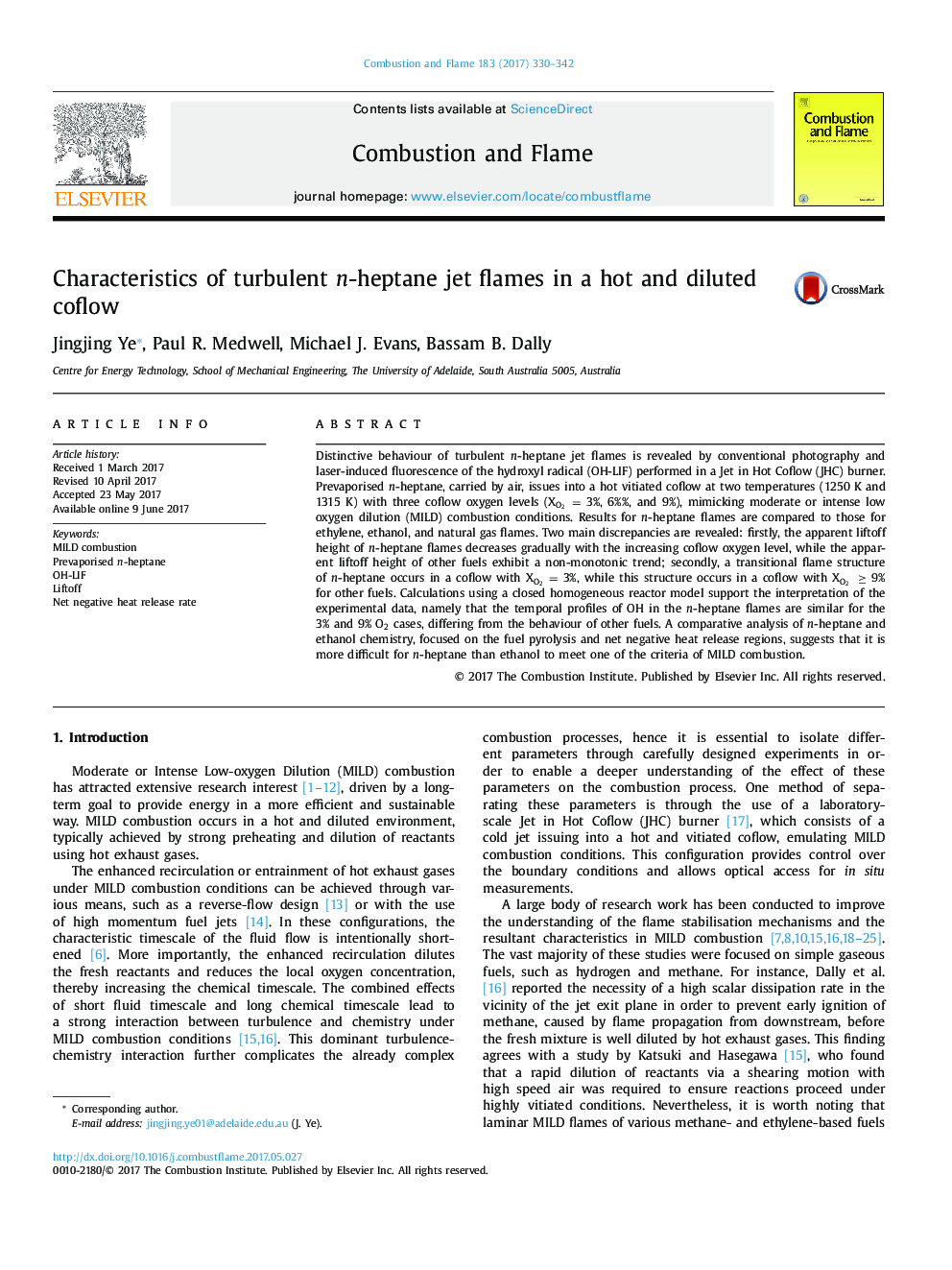| کد مقاله | کد نشریه | سال انتشار | مقاله انگلیسی | نسخه تمام متن |
|---|---|---|---|---|
| 6468170 | 1423554 | 2017 | 13 صفحه PDF | دانلود رایگان |
Distinctive behaviour of turbulent n-heptane jet flames is revealed by conventional photography and laser-induced fluorescence of the hydroxyl radical (OH-LIF) performed in a Jet in Hot Coflow (JHC) burner. Prevaporised n-heptane, carried by air, issues into a hot vitiated coflow at two temperatures (1250 K and 1315 K) with three coflow oxygen levels (XO2 = 3%, 6%%, and 9%), mimicking moderate or intense low oxygen dilution (MILD) combustion conditions. Results for n-heptane flames are compared to those for ethylene, ethanol, and natural gas flames. Two main discrepancies are revealed: firstly, the apparent liftoff height of n-heptane flames decreases gradually with the increasing coflow oxygen level, while the apparent liftoff height of other fuels exhibit a non-monotonic trend; secondly, a transitional flame structure of n-heptane occurs in a coflow with XO2 = 3%, while this structure occurs in a coflow with XO2â¥Â 9% for other fuels. Calculations using a closed homogeneous reactor model support the interpretation of the experimental data, namely that the temporal profiles of OH in the n-heptane flames are similar for the 3% and 9% O2 cases, differing from the behaviour of other fuels. A comparative analysis of n-heptane and ethanol chemistry, focused on the fuel pyrolysis and net negative heat release regions, suggests that it is more difficult for n-heptane than ethanol to meet one of the criteria of MILD combustion.
Journal: Combustion and Flame - Volume 183, September 2017, Pages 330-342
